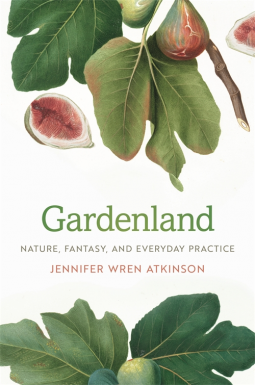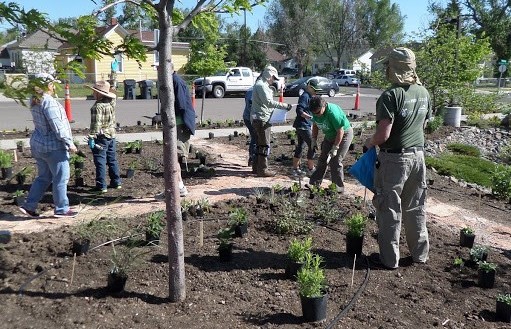 Should garden literature be listed in the “fantasy” section of the bookstore?
Should garden literature be listed in the “fantasy” section of the bookstore?
This column was published Dec. 23, 2018, in the Wyoming Tribune Eagle and also posted at Wyoming Network News: https://www.wyomingnetworknews.com/should-garden-literature-be-listed-in-the-fantasy-section-of-the-bookstore
By Barb Gorges
My book reviews have always been about books I like and recommend. Gardening books are some of my favorite winter reading and gift suggestions.
However, I was disappointed by “Gardenland,” by Jennifer Wren Atkinson. No color photos—only a dozen black and whites! It was described as a book about garden writing. Among other topics she discusses is how over the centuries it hasn’t always been about how-to, but how writers support our garden fantasies. We started dreaming about floriferous and bountiful gardens when industrial agriculture took away the romance of the family farm.
But this is an academic textbook, it turns out, written at 20th-grade level, compared to this column clocking in at 9th -grade level. We need a popular literature writer to interpret these very interesting ideas. The 17-page bibliography is a useful list of garden writers like my favorites, Michael Pollan and Eleanor Perenyi, and introduces many more.
 For those of us who want to be immersed in fantastical gardens, there is a new book, “GardenLust, a Botanical Tour of the World’s Best New Gardens,” by Christopher Woods. You can justify buying this 8.5 x 10.5-inch, 400 page, full-color, $40 extravaganza as it will give you inspiration for your own garden—if you have a million dollars to spend. At the very least it may count for your recommended daily dose of nature viewing.
For those of us who want to be immersed in fantastical gardens, there is a new book, “GardenLust, a Botanical Tour of the World’s Best New Gardens,” by Christopher Woods. You can justify buying this 8.5 x 10.5-inch, 400 page, full-color, $40 extravaganza as it will give you inspiration for your own garden—if you have a million dollars to spend. At the very least it may count for your recommended daily dose of nature viewing.
You can preview the book at http://www.timberpress.com. I haven’t decided if I want to order it or if I can wait for it to appear at a used book store. Will what’s new today look boring by then because everyone copied it, like Karl Foerster grass and Russian sage today? Maybe it’s best consumed fresh or at least when there’s a good discount.
 Atkinson thinks books about vegetable gardening are not in the realm of fantasy garden books. She would be mostly wrong when it comes to Eliot Coleman. He’s come out with a photo-filled 30th anniversary edition of his book, The New Organic Grower, A Master’s Manual of Tools and Techniques for the Home and Market Gardener.” He’s a successful year-round market vegetable grower…in Maine. If he can do it there, we can do it here.
Atkinson thinks books about vegetable gardening are not in the realm of fantasy garden books. She would be mostly wrong when it comes to Eliot Coleman. He’s come out with a photo-filled 30th anniversary edition of his book, The New Organic Grower, A Master’s Manual of Tools and Techniques for the Home and Market Gardener.” He’s a successful year-round market vegetable grower…in Maine. If he can do it there, we can do it here.
Coleman does it without a lot of expensive machinery. He’s learned how to appeal to customers and how to handle seasonal employees and he passes that information along to the reader, and the nuts and bolts of growing.
Barbara Damrosch, Coleman’s wife, contributed a section about how she grows and sells cut flowers at their farm store as well.
Even if you aren’t planning to go into business, this is an engaging introduction to organic growing from a farmer happy to share his knowledge. You can just imagine Coleman jubilantly giving you a garden tour of Four Seasons Farm. Successful organic growing might not be as much of a fantasy as you think.
Seed catalogs have long been known to be fantasy literature. Those Burpee babies hold giant tomatoes in their outstretched little hands. It’s an old fisherman’s trick that uses perspective to make the fish, or tomato, in the foreground look huge in comparison to the person in the background.
As I become a plant nerd, I can get excited about catalogs with absolutely no pictures. However, the catalog that gets my vote for most beautiful is Botanical Interests Seed Catalog, 2019 Season. Their seed packets feature original botanical art. It makes me want to cut out the pictures and frame them—both flowers and vegetables.
Botanical Interests is a family-owned company in Broomfield, Colorado. Its seeds can be found nationwide and in our local, independent garden centers. Both the website, https://www.botanicalinterests.com, and print catalog contain a wealth of information, as do their seed packets, printed inside and out.
For instance, in the catalog there is an article about the national movement for local cut flowers. In the last few decades, most cut flowers purchased at grocery stores and florists in the U.S. have been imported from South America, raising concerns about pesticide use and the carbon footprint of travel. Check out https://slowflowers.com/. It’s like the slow food movement.
Here in Wyoming we need fantasy garden literature for the five or six months when nothing blooms outdoors. Besides the catalogs and coffee table books, don’t forget to look for garden shows on Netflix. Several are British and make a nice getaway.











